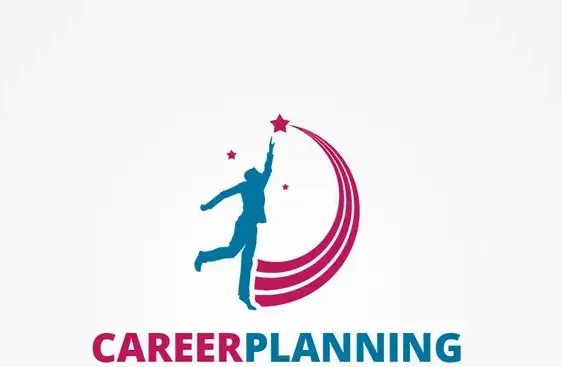If you’re anything like me, you probably thought college would teach you everything needed for your career. After that, you’d land a job, climb the ladder, and never have to study again. But that’s not how it works.

Sure, college or other formal education gave you plenty of knowledge, but you’ve likely learned even more practical skills from every job you’ve had. And now, to keep growing—and to stand out in the job market or move up—more workers are embracing upskilling, the practice of continuously learning new skills beyond their core job duties.
A 2021 Gallup study (commissioned by Amazon) found that 57% of workers were interested in training to upgrade their skills or learn new ones to advance their careers. Even more telling, 52% had already taken part in an upskilling program in the past year.
Dimitris Tsingos, cofounder and president of learning tech company Epignosis, says this surge in upskilling comes from today’s fast-changing job market. The pandemic made people rethink work, seek better work-life balance, and even switch careers—fueling the Great Resignation. Many realized that upskilling is the key to landing a role that matches their values and pay expectations.
So, what exactly is upskilling, why does it matter, and how can you do it? Let’s break it down.
What is upskilling?
Upskilling simply means learning new skills—specifically, building on what you already know or taking your expertise to the next level. Tsingos explains that it’s a way for employees to enhance their role, bring more value to their employer, and gain deeper expertise in a specific area.
This benefits both sides: Companies get more knowledgeable employees, and workers expand their skill sets, helping them grow in their careers.
Don’t confuse upskilling with reskilling. Career coach Alicia Perkins explains: “Upskilling builds on your current skills, while reskilling means learning something entirely new—often for a different role.”
With upskilling, you’ll learn new things, but they’ll usually relate to your current industry or job. Perkins adds that it’s about having a broad skill set so you can adapt now and in the future.
Tsingos also points out that upskilling isn’t just taking a class or earning a certificate—it’s about gaining knowledge you can actually use. For example, someone might take a language course and get certified, but true upskilling means they can actually speak that language, not just show proof they passed a test.
Why is upskilling so important?
Corporate coach Zanzibar Vermiglio says upskilling isn’t just about learning—it’s about career growth. In today’s job market, there’s a strong drive to keep improving.
A TalentLMS survey by Epignosis found that 36% of Gen Z workers feel their education didn’t prepare them well for the workplace, making upskilling more crucial than ever.
Beyond learning itself, upskilling offers big benefits:
- Staying updated with industry trends
- Showing employers you’re eager to learn and adapt
- Staying competitive (As Perkins puts it, “Your strength depends on your skill set.”)
- Avoiding job stagnation
- Standing out among coworkers and job applicants
- Boosting job satisfaction
- Feeling more productive
Plus, it can increase your earnings. The Gallup-Amazon report suggests upskilling can raise annual wages by 8.6%, and two-thirds of workers said it improved their quality of life.
Employers benefit too—23% of Gen Z workers would leave a job that doesn’t offer learning opportunities.
4 steps to upskill yourself
Perkins says upskilling requires a strategy. Here’s how to do it:
1. Identify the skills you need.
Ask yourself: What skills will help you reach your career goals? Look for gaps in your current abilities and what’s in demand in your industry—now and in the future. Perkins advises, “Think big picture.” Also, focus on transferable skills (like writing or mastering software) that apply across jobs.
Tsingos suggests checking job postings in your field to see what skills employers want. Talk to managers about advancement opportunities and get input from mentors or industry peers.
While needed skills vary by industry, some universal ones include:
- Cross-functional communication
- Creative thinking
- Relationship building
- Data analysis
- Public speaking
- Remote team management
- Diversity, equity, and inclusion (DEI)
- Problem-solving
- Media literacy
- Soft skills (emotional intelligence, adaptability, curiosity, etc.)
2. Set clear goals.
Decide what you want from upskilling: a promotion, raise, job satisfaction, or a new role. Vermiglio says, “I love when people design their own future.”
Then, define what upskilling will help you get there. Tsingos says clear goals ensure results—whether it’s finishing a course or mastering a skill. Perkins adds that timelines keep you on track.
3. Find the right tools and courses.
There are endless ways to upskill. Perkins suggests exploring free options first, like alumni programs, professional associations, or employer-provided training.
Many companies offer tuition reimbursement, stipends, or professional courses. Some even cover conferences or mentorship programs.
For free or low-cost options, try:
- LinkedIn Learning (business & professional courses)
- Google Skillshop (certifications in Google Ads, Analytics, etc.)
- Udemy (courses on writing, design, time management, etc.)
- HubSpot (digital marketing, blogging, social media courses)
4. Ask your employer about upskilling benefits.
If your company doesn’t offer upskilling support, make a case for it. Vermiglio says to highlight how it benefits the company. Perkins adds, “You might be surprised what starts just by bringing it up.”
Use real examples. If you manage a website, show how SEO training could boost traffic. If you’re in sales, explain how learning a new CRM system could increase efficiency.
If they still won’t help, consider independent options—or even a new job. Tsingos notes that more companies now offer learning perks to attract talent.
How to use your new skills
Vermiglio says the best upskillers add real value—like improving processes or suggesting new ideas. How you use your skills depends on your goals.
If you want to apply them in your current job:
Talk to your boss. Perkins says, “Gain hands-on experience by taking on new tasks.” Just be clear about expectations—you shouldn’t do extra work without fair compensation.
If you want to showcase them in a job application:
List new skills, certifications, and courses on your resume. But Vermiglio stresses that it’s not just about certificates—show how you’ve used these skills to make an impact.
If you want to discuss upskilling in an interview:
Highlight your love for learning and staying updated. Share real examples, like how a new project management tool you learned cut deployment time by 15%. Perkins says, “It’s not just about the experience—it’s about showing you have what they need.”
How to keep upskilling long-term
Upskilling never really ends.
When job hunting, prioritize companies that support learning. If a great job lacks these perks, Perkins suggests negotiating a higher salary to fund your own growth.
Tsingos puts it simply: “We’re in the knowledge economy. Knowledge evolves. Smart companies hire people for what they can learn, not just what they know today.”

